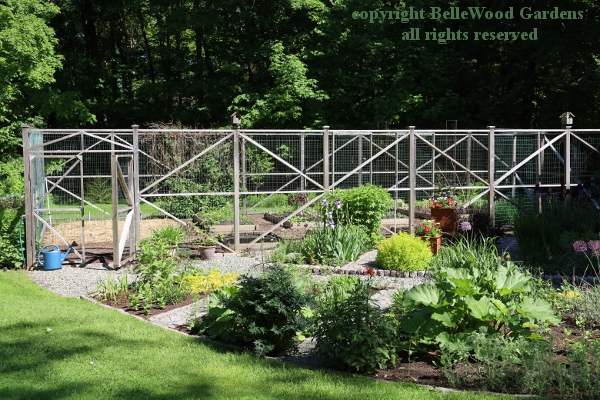
.
If you have any comments, observations, or questions about what you read here, remember you can always Contact Me
All content included on this site such as text, graphics and images is protected by U.S and international copyright law.
The compilation of all content on this site is the exclusive property of the site copyright holder.
Five Vermont Gardens:
Patsy Highberg's Garden
Wednesday, 12 June 2019
Yesterday was a day filled with pleasant activities: three garden visits, a tasty lunch, my lecture, and a pleasant dinner with half a dozen garden club board members in one's lovely home. I confess I was a little fatigué. When told to just sit, pre-dinner, I was happy to oblige and let someone bring me a glass of wine, circulate with appetizers. Delicious dinner, good conversation, back to the Helmers before dark. Did some packing as tomorrow it is again "all aboard" for the return train journey home.
But that is not until noon, so Jill and I have time for one last garden visit.
There is a deer fence, the mostly invisible mesh promulgated by Dave Benner in Pennsylvania. The pair of ornamental metal gates open we drive up. Magic? No. Jill explains that they recognize metal, as in automobile. If a deer saunters up, or a pedestrian, they remain closed. I doubt a bicycle would trigger the sensor but what about a motorcycle . . .
Candy, our hostess for last night's dinner has come to garden visit with us. How nice. Parking both cars in the shade and looking around - here comes Mark, the head gardener. He is here full time year-round, with two under-gardeners in summer. One is safe to weed unattended, the other is learning. As our time is limited (that pesky Amtrak departure at 11:56 am) we bypass the propagation area and go right to the garden(s.)

The fenced area is the vegetable area with an adjacent cutting garden.
With the numerous farmers markets that are now available the reliance
on the vegetable garden has diminished. Yes, asparagus and such.
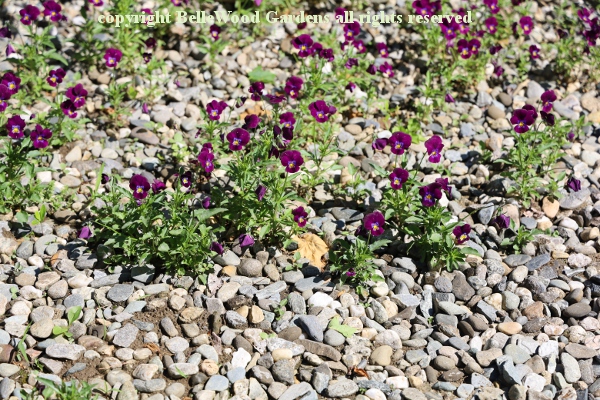
Pretty little pansy-purple Viola tricolor seeding in the gravel. There are
a few other self-sowing annuals, dainty Papaver atlanticum for one.
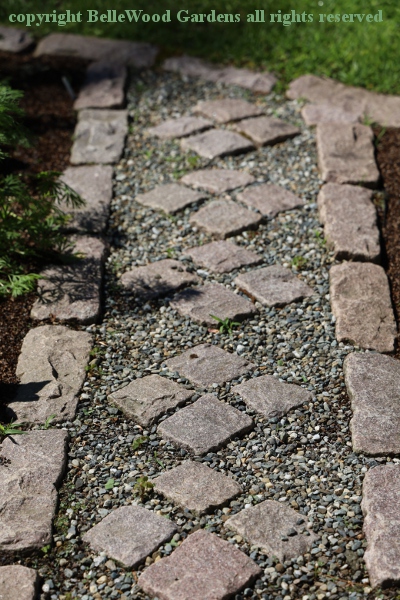
The paths dividing up the cutting garden are ornamental
on their own, with Belgian block edging and in the gravel.
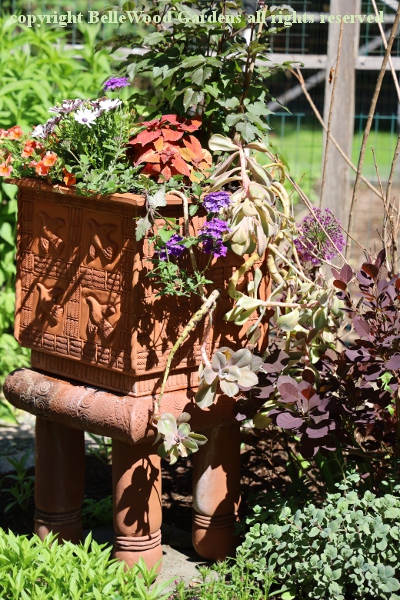
There are a couple of very elegant terra cotta planters.
One of the pair is elevated on a quite substantial base.
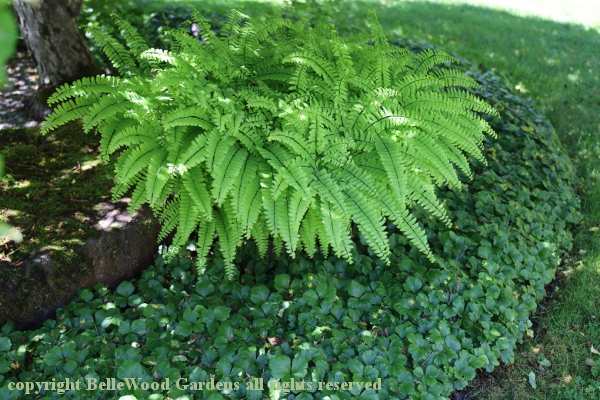
Herbaceous plants, I think, look better in combination. Just look at this pairing:
very well grown maidenhair fern, Adiantum pedatum, and dark green Waldsteinia.
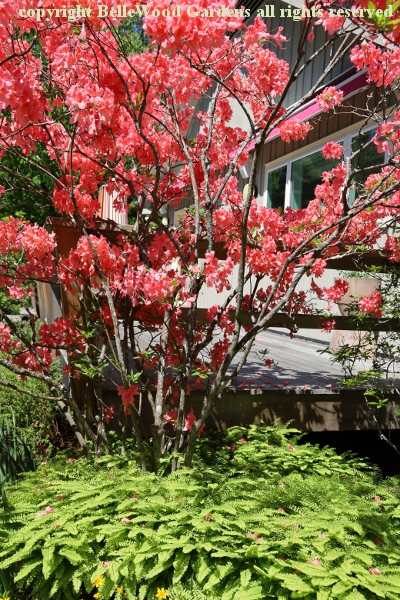
Or Adiantum as the partner, making a tutu for a strawberry pink
azalea in perfect bloom. All the azaleas and rhododendron will be
dead-headed after flowering. It takes all three garden staff a full
day and a half day more. No wasted energy into seed production.
I have seen this attention to detail in Japan. And, as we continue to tour this garden I see a Japanese influence. Not merely plant selection but also placement, use of stone, and water.
My camera requires a change of battery. I have a spare, back in the car. Hurry back, swap batteries - and slow down to take a few images while returning to the "tour group trio."
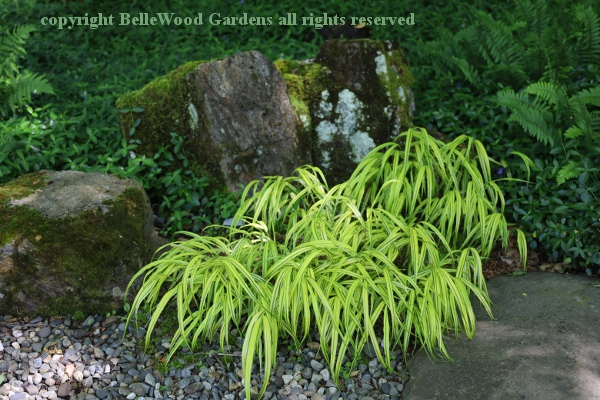
There is a well grown Japanese forest grass, Hakonechloa macra 'Aureola',
almost glowing in the shade, against some moss- and lichen-coated rocks.
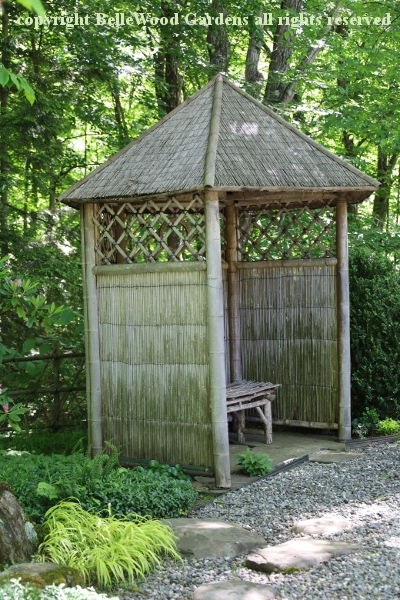
It is an accent for a rustic, Japanese style seating area / shelter
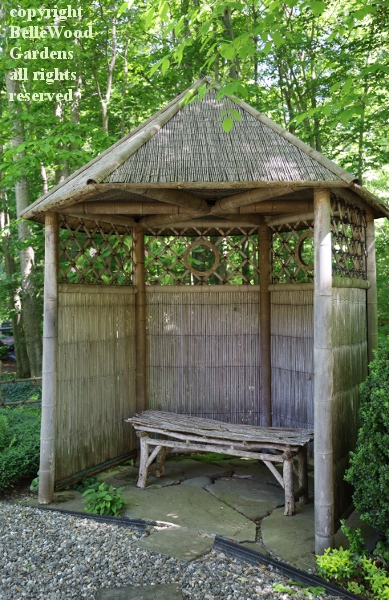
with reed mat partial walls for sides and rear and roof. To sit and write haiku.
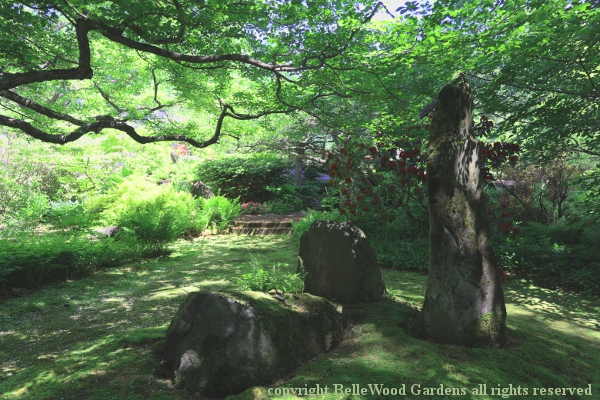
In the Sakuteiki it is noted that creating a garden is ishi wo tateru koto. Literally, the "act of setting stones upright." Three stones, dappled light making shadows on the mossy ground.
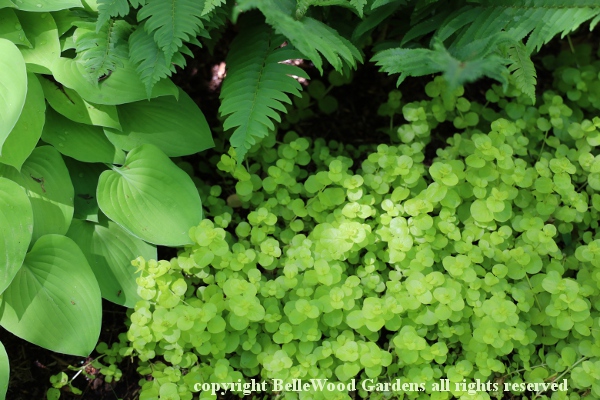
Color play can be something subtle yet still effective, as with golden hosta and
yellow creeping Jenny, Lysmachia nummularia 'Aurea'. Scale is important.
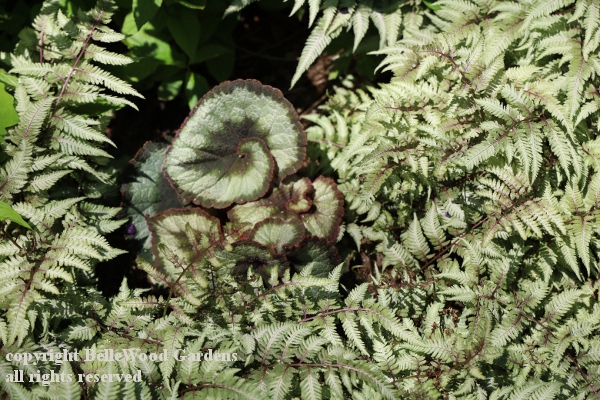
I am enchanted with this pairing of Japanese painted fern, Athyrium niponicum 'Pictum'
and a tender rex begonia, 'Escargot'. Imitation, some say, is the sincerest form of flattery.
Once home I went looking for the snail but could not find it. Best I found was 'Moonlight'.
Doesn't curl, not three dimensional, no dark edge and eye. But at least it has the concept.
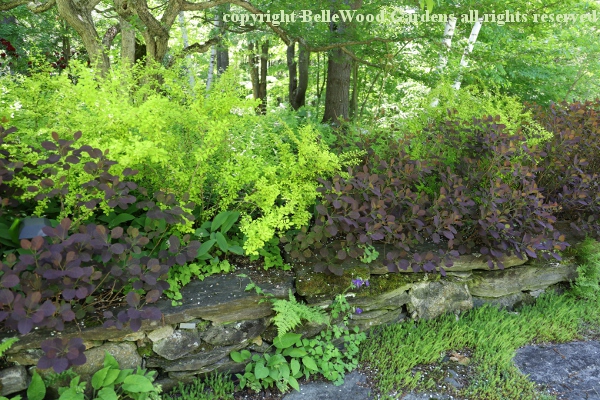
There is color play with complementary colors, opposites on the color wheel,
like this pairing of golden barberry, Berberis thunbergii 'Aurea' and bronzy
purple smoke bush, Cotinus coggygria. Possibly it's 'Nordine', the hardiest
of the purple cultivars. Both shrubs respond nicely to pruning, keeping them tidy.
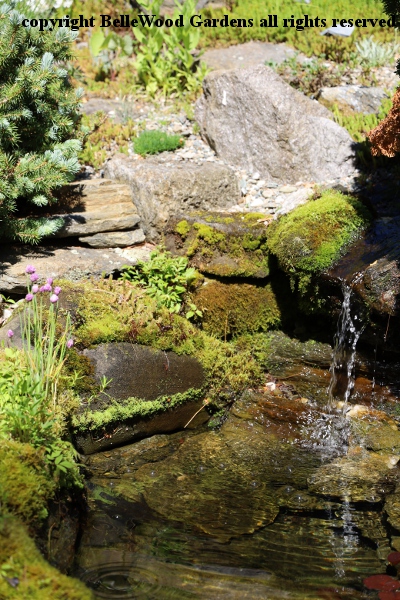
A small pool up near the house makes a reappearance with a trickle
of water into a second little pool. Water music. Play of light with ripples.
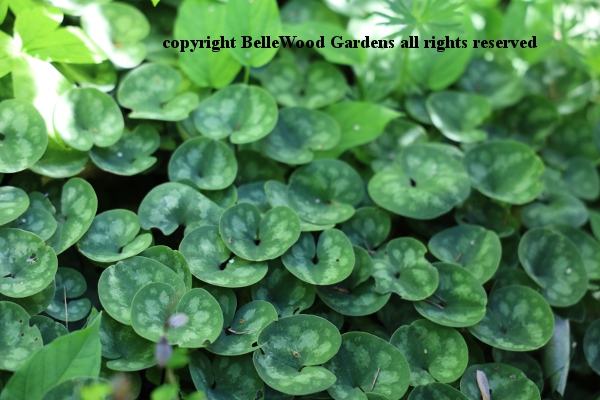
I saw this, and asked Mark which asarum it was. Not asarum he said, it is a plant that is an anagram of asarum. Which would be saruma. I have a problem with this. Saruma henryi has somewhat fuzzy rounded leaves, silvery sheen when new, then maturing to a soft green shade, No spots. Monotypic, just one species. I think I'll stay with asarum. But which one is the quandary. A. shuttleworthii is the right size and shape but glossy rather than matt, and only hardy to zone 5. Regardless, this is an attractive well-grown plant, and I admire it.
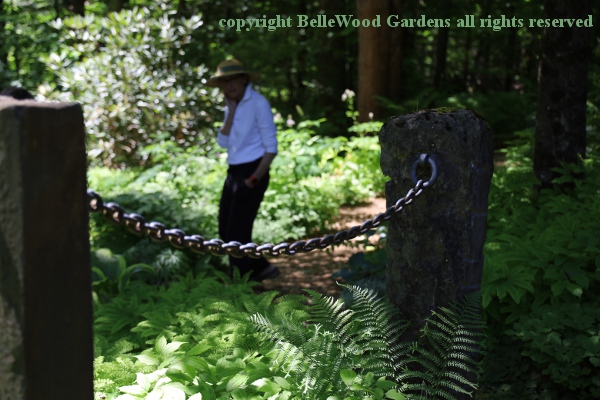
A heavy chain to keep visitors on the path rather than toppling down the hill.
It serves the purpose admirably. The links are welded. It curves but cannot flex.
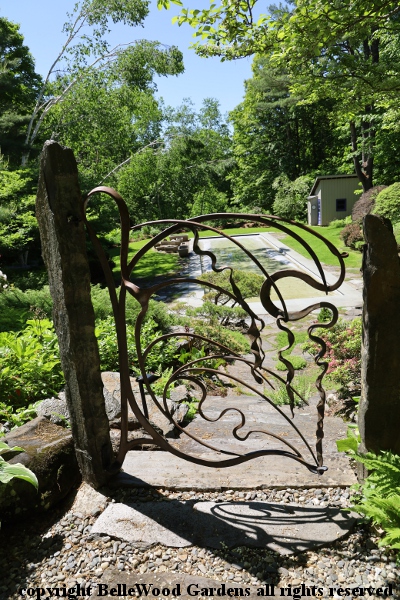
An artistic, airy metal gate of curves and squiggles. The shadows are equally playful and even more malleable under the hammer of the sun's shifting path (or the swing of the gate.)
Jill speaks up. Time to leave if I am to catch my train. Good thing she is keeping track.
Here, I am lost to time and train schedules, visiting five wonderful gardens in Vermont.
Back to Top
Back to Five Vermont Gardens
Back to June 2019
Back to the main Diary Page